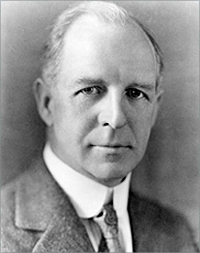Lyman Briggs (1874-1963) was an American engineer, physicist and administrator.
In 1939, President Franklin Roosevelt called on Briggs to head the newly established the Uranium Committee, a secret project to investigate the atomic fission of uranium, as a result of the Einstein-Szilard Letter. Even though Roosevelt had sanctioned the project, progress was slow and was not directed exclusively towards military applications.
Briggs was in ill health and had difficulty securing funds to meet physicists’ research demands. Nonetheless, the Uranium Committee (later referred to as S-1), discovered and characterized various uranium isotopes that would supply a foundation for the Manhattan Project.
Scientific Contributions
Briggs began his career in physics as a research assistant with the U.S. Department of Agriculture in Washington D.C. in 1896. There he studied X-rays, which had only recently been discovered by German physicist Wilhelm Röntgen in 1895. Later, the department placed Briggs in charge of the Bureau of Soils. It was during this period that Briggs founded the study of “soil physics,” which combined his extensive educational background in biology and ecology along with his passion for physics. While studying soil physics, Briggs devised a soil classification system and studied the effect of the environment on water uptake by plants.
In 1917, Briggs was transferred to the Department of Commerce’s Bureau of Standards, where he helped devise innovative machinery for naval vessels to be used in World War I.
Brigg’s success at the Bureau of Standards earned him a permanent position there, and he became director of the Bureau in 1933. After World War I, Briggs continued his aerodynamic research. In 1922, he invented the Earth Inductor Compass, a device which allowed pilots to accurately determine an airplane’s bearing.





